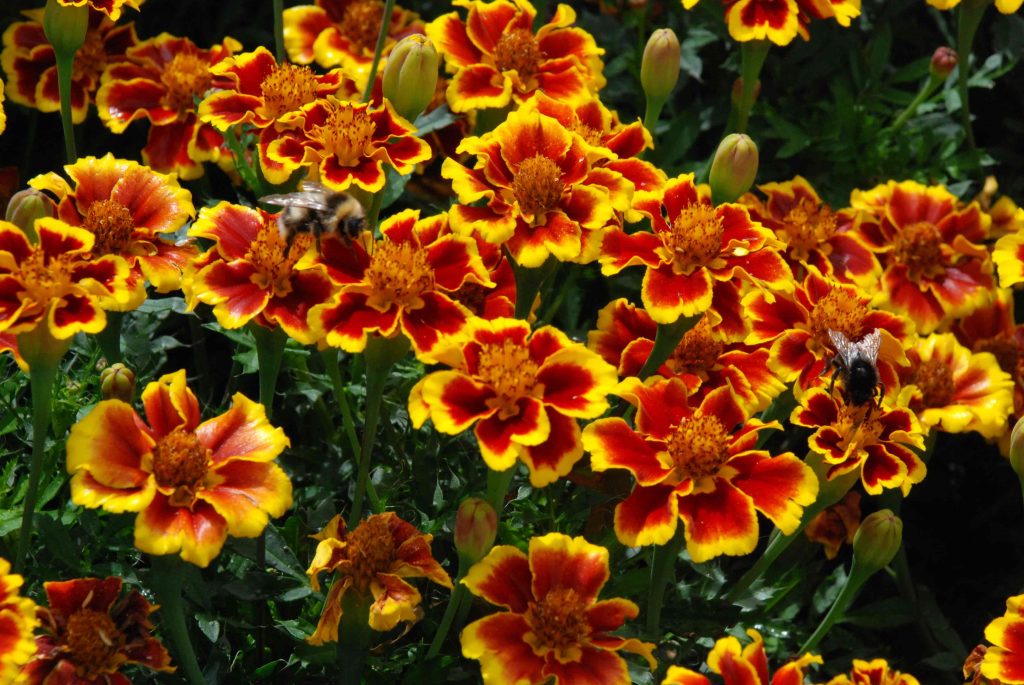
When you need summer colour you can rely on, there is no better choice than marigolds. They have been garden favourites for centuries, ever since many of them were introduced from Central America. No respectable garden was complete without them in the 1960s and 70s but then they fell from favour as tastes became more sophisticated. It was also the time when busy Lizzies were developed into bedding plants and no one grew anything else. But then mildew attacked busy Lizzies and we could no longer rely on them and begonias took over. Lovely though begonias are, they are tricky to grow from seed. Marigolds, on the other hand are the easiest plants of all to grow and we need to look again at marigolds to cheer up our summers and fill beds and patio pots
Although we call them marigolds there are two main groups: what are technically tagetes and the ‘English’ or pot marigolds (calendulas). The common names are all very confusing and don’t really tell you where they come from!
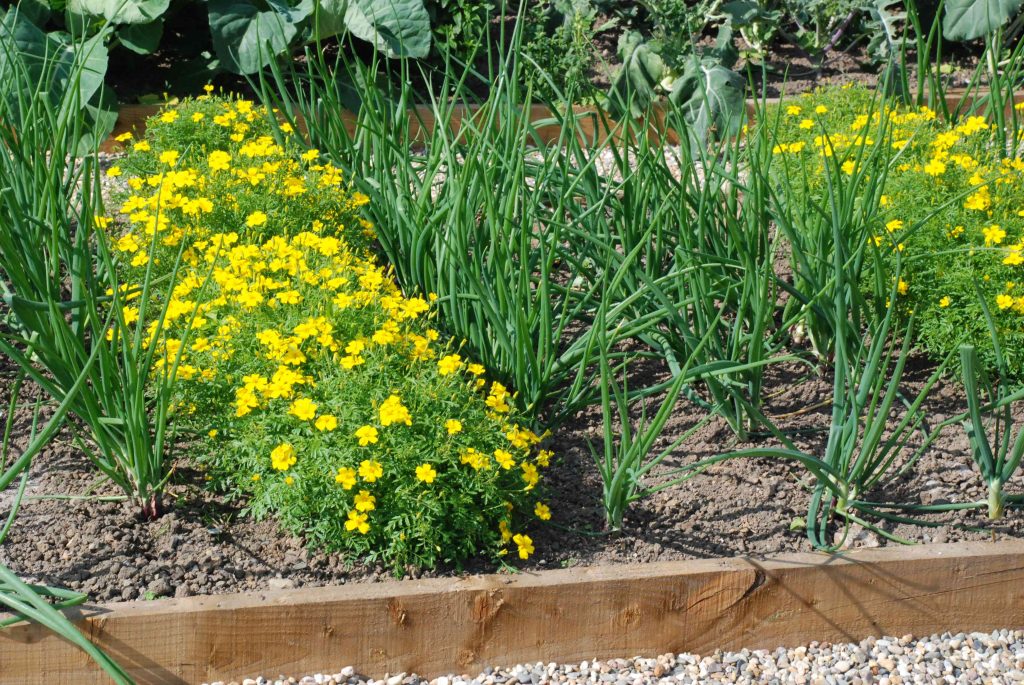
Tagetes is the botanical name of all the ‘American’ marigolds but also the common name we give to the plant that is properly called Tagetes signata (Tagetes tenuifolia). This, like all the tagetes, is a frost-tender plant and has ferny leaves on bushy plants and masses of small flowers. They do not flower as long as the other kinds. There are two main kinds: bright, ‘Lemon Gem’ (above) and darker ‘Golden Gem’ and also a mixture called ‘Starfire’.
Then there are the African marigolds (Tagetes erecta) and French Marigolds (Tagetes patula), which are not from Africa or France!
French marigolds are the most popular and are short and bushy, with many small flowers in yellow, bronze and orange shades. They can have single flowers like the old, but brilliant ‘Legion of Honour’ (top pic) and ‘Naughty Marietta’ as well as doubles. All withstand the worst our weather can throw at them and bloom on through to autumn. Most grow from 15-30cm high.
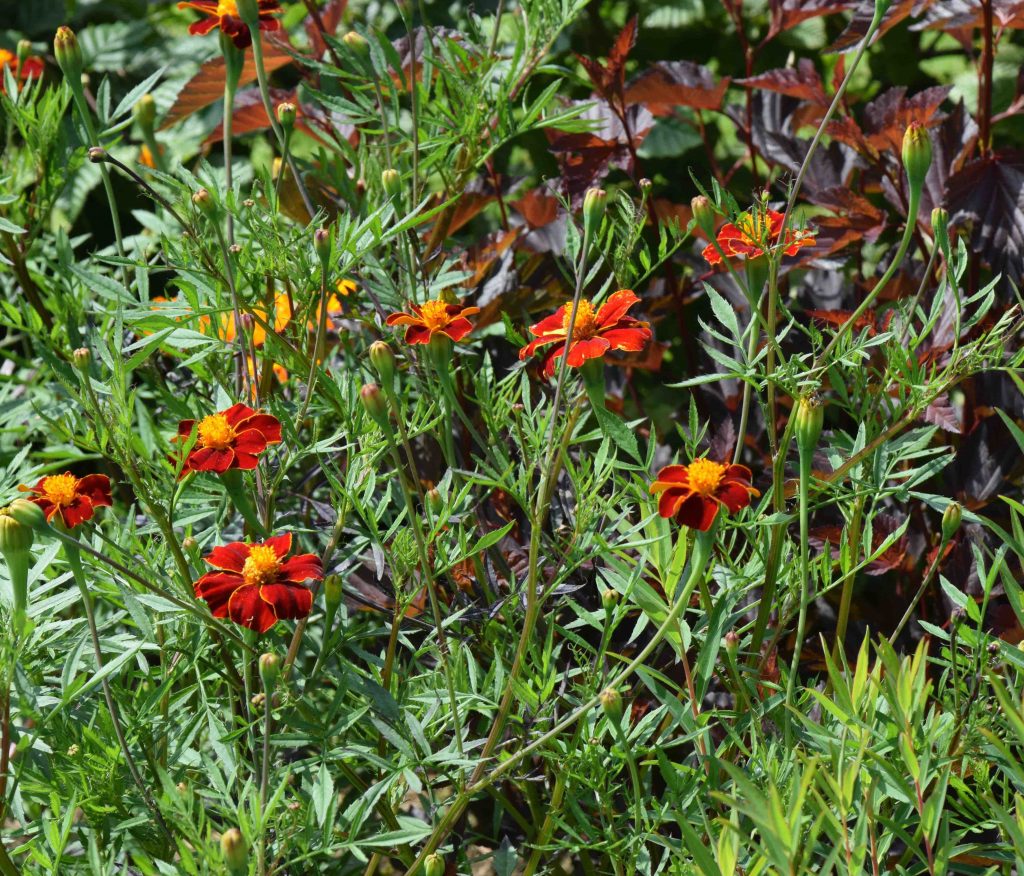
A ‘recent’ introduction is ‘Burning Embers’ which grows to 60cm high. Ironically it is sometimes called ‘Swedish marigold’ because it is the one that Linnaeus grew centuries ago. It was ‘rediscovered in the Botanic Garden in Uppsala. As such it is basically the wild T. patula, from which dwarf French marigolds were developed. I grew it last year and it is a great filler for borders, with tall, lanky stems and small flowers.
Several years ago ‘Strawberry Blonde’ was introduced and I saw it in a trial and predicted it would become very popular and I was right. It is a new colour in French Marigolds and suits those who argue that most varieties are too brash.
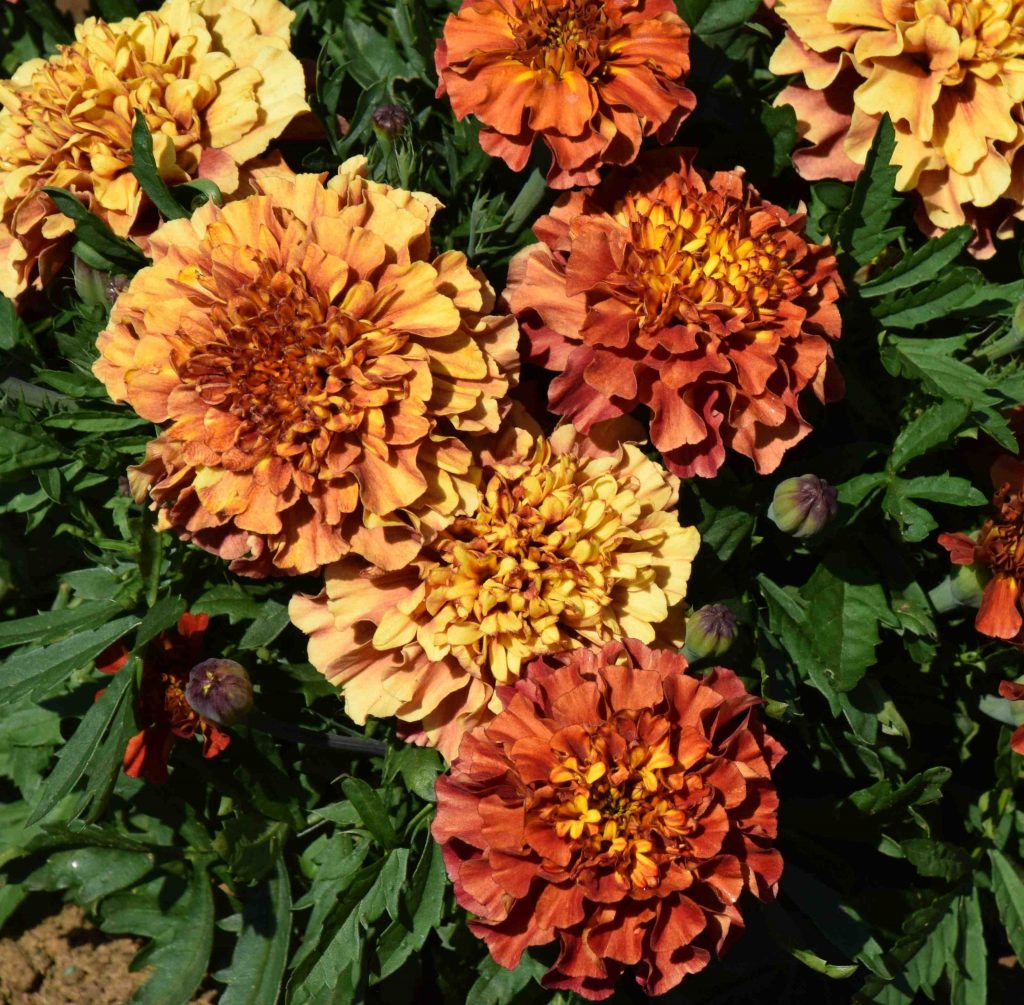
The African marigolds are taller and have large, double flowers in yellow and orange. There are newer, pale cream varieties but these are usually not as vigorous. Most grow to about 45-60cm high although there are dwarf kinds too. They are not as good in wet weather because the flowers can become waterlogged and rot, especially late in the season. I particularly like ‘Kees Orange’ (below) which is the most vibrant colour imaginable.
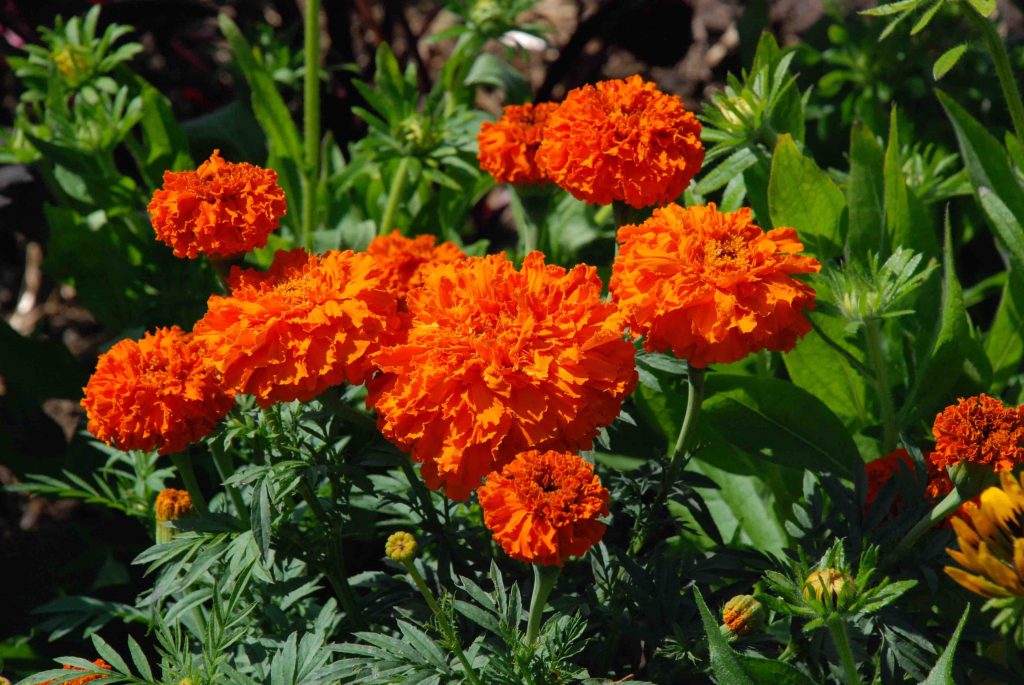
All these are half-hardy annuals, meaning that you can start them now, sowing on the windowsill or in a greenhouse. Transplant the germinated seedlings into trays or pots and grow on with protection before planting out in late May.
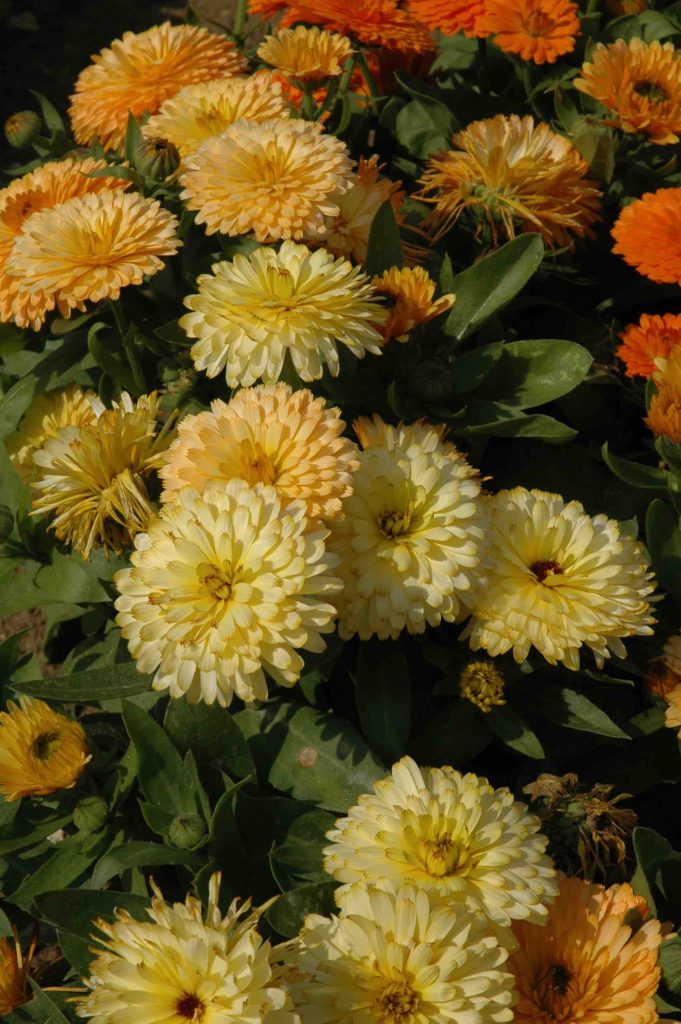
Calendulas, or English marigolds are from Southern Europe and are not native. But they are hardy annuals and will seed around in gardens where they are happy. You can sow them in pots to plant out or sow them in the garden where they are to bloom. They vary in height from 20-75cm and can be used for pots, borders or cut flowers. When it comes to growing for bees and beneficial insects, nothing is better. The petals are also edible and can be used to add to salads. In the past they were used to colour butter and other foods and the flowers can be added to the bath to make the water fragrant and soothing. Their name ‘pot marigold’ refers to the fact that they were used in cooking (the pot).
You can buy marigold plants soon but be sure to protect them from frost. And you can buy seeds now and sow them straight away. The advantage of this is that you can choose what variety you want, as well as save money!
This week’s reminders
Feed lawns
Prune roses
Sow hardy vegetables outside
Sow tomatoes, cucumbers and courgettes in the greenhouse
Deadhead daffodils
Weed beds and borders